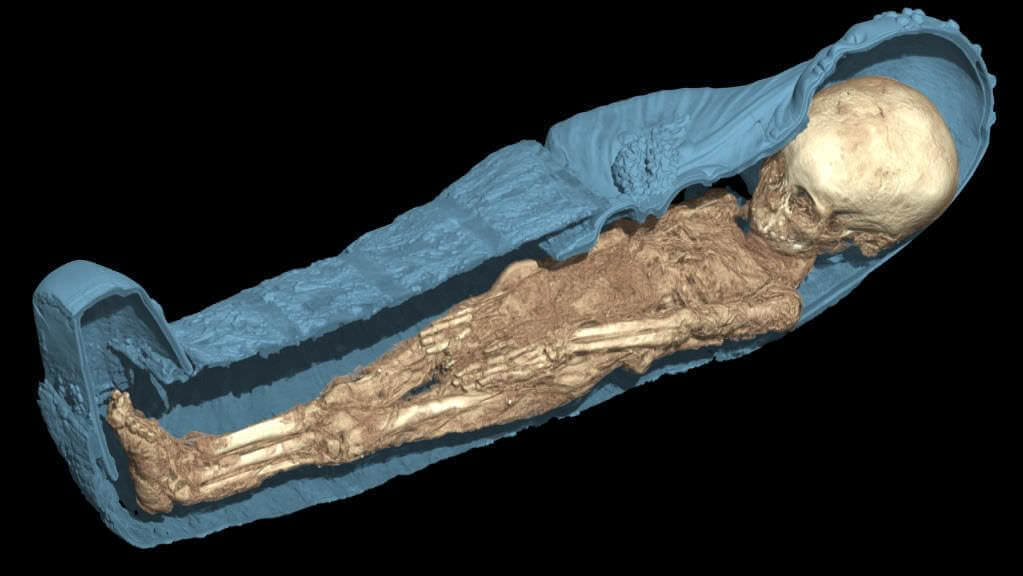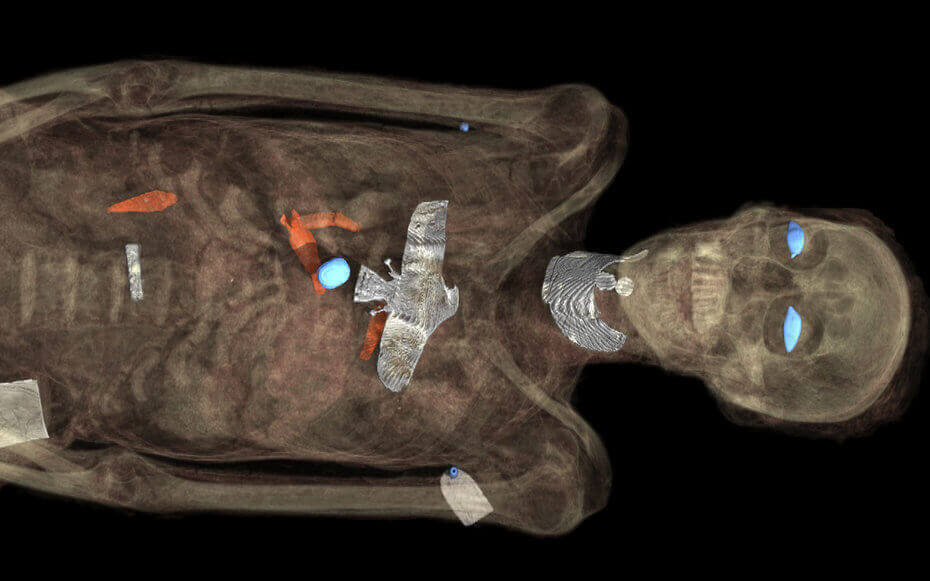At a new exhibition in Sydney, Australia, 3D technology is used to uncover the secrets of the Ancient Mummy — including causes of death.
A new exhibition in Sydney, Egyptian Mummies, is using 3D scanning and 3D printing to illustrate the lives of ancient Egyptians in a whole new way.
In a joint effort with the British Museum, curators at the Museum of Applied Arts & Sciences (MAAS) in Sydney have virtually unwrapped several 3,000 year-old mummies. In effect, they’ve been able study these precious artifacts without damaging them.
Scientists used CT scanning to create detailed 3D models, revealing brand new information about each specimen. This included their approximate age, sex, diet, state of health, and possible causes of death.
According to Co-Curator and Egyptologist Marie Vandenbeusch:
“Egyptian Mummies is a unique opportunity to discover more about life and death in ancient Egypt. British Museum’s curators, scientists and conservators combined their knowledge to explore CT scan data and study objects from the museum’s vast collection, providing a unique insight into the life of six ancient individuals.”
The mummies on display include three women, two men, and a two year-old boy.

3D Printed Amulets from an Ancient Mummy
At the exhibition, visitors will be able to virtually peel back the bandages with interactive 3D visualizations, and explore each mummy’s ancient life.
Furthermore, the scans have enabled researchers and curators to 3D print replicas of the artefacts an ancient mummy was buried with. A mummy nicknamed Tamut, for example, was adorned with intricate amulets and jewels all over her body at the time of burial.
Melanie Pitkin, another curator at MAAS, explained to Travel + Leisure magazine:
“It’s absolutely wonderful to think we have also been able to 3D print some of these amulets. That is, without ever having to undo Tamut’s bandages and disturb her body, we can still create the objects placed on her body using the CT scan data and hold them in our hands.”
In case you’re wondering, Tamut’s cause of death is thought to be from a heart attack or stroke. This is because of calcification in her arteries caused by a diet high in animal fat. Steer clear of those cheeseburgers unless you want the same fate.
Currently, the British Museum is busy scanning even more mummy specimens — both human and animal – to continue this exciting new line of research into ancient Egyptian life.
In the meantime, “Egyptian Mummies: Exploring Ancient Lives” is on now until 25 April 2017 at the Powerhouse Museum, Sydney.
Source: Press Release

License: The text of "3D Scanning & 3D Printing Unwraps Ancient Mummy Secrets" by All3DP is licensed under a Creative Commons Attribution 4.0 International License.